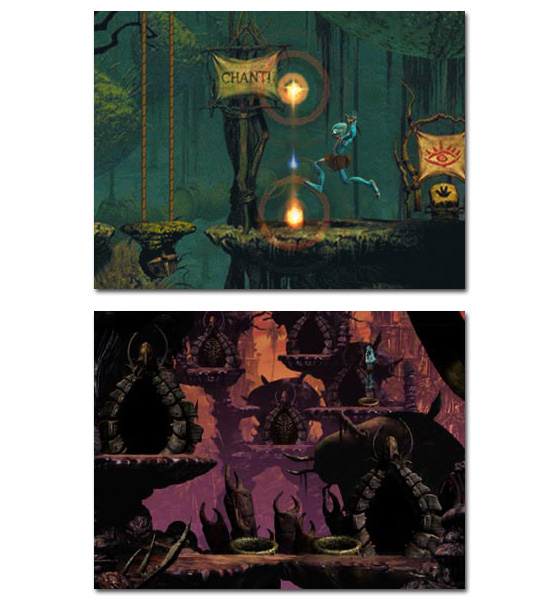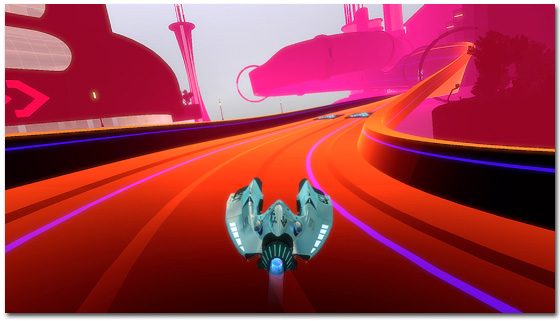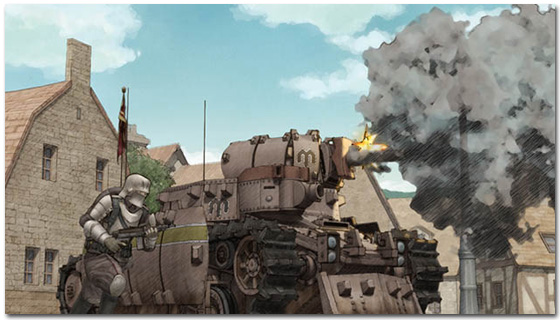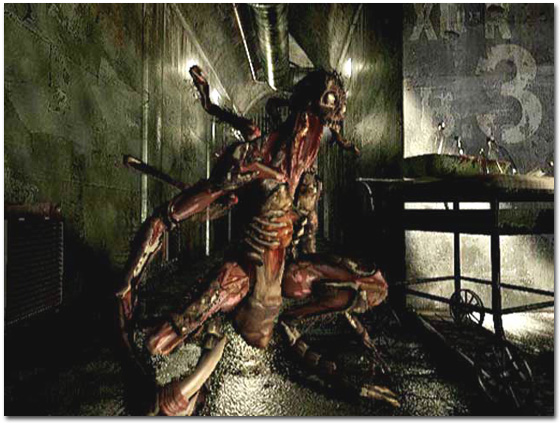Resident Evil 0 – Dissecting Traditional Horror
March 6th, 2010

Recently I completed Resident Evil 0 on the Gamecube and have prepared a few articles snuffing out some observations. My primary interests this time around lie in the traditional Resident Evil template (that used in RE 0-3) which I’ll explore in the 2 mini-essays below.
Genre Origins and the Creation of Traditional Horror
The Resident Evil template is ultimately an evolution of the traditional point and click adventure, perhaps the first stage of migration after the genre’s demise from the mainstream. What separates Resident Evil from the genre previously is the inclusion of an entire offensive system, giving Resident Evil more than just a purely investigative, puzzle-solving feel. As with many point-and-click adventures however, Resident Evil‘s exploration and shooting mechanics take a back seat, not to narrative though (the narrative is atrocious), but to atmosphere.
The majority of the player’s time in a point-and-click adventure is spent investigating, sifting through for environmental clues and interrogating the locals in pursuit of the next lead. Resident Evil removes the people from the equation, leaving the quiet isolation of the player’s unassuming puzzle solving as the dominate part of the game.
It’s easy to see from here where survival horror comes into play, all we need is a little atmosphere to set the tone. The atmosphere is created largely through soundscapes. Of course, the realism of the pre-rendered backgrounds, particularly those in RE Remake and Resident Evil 0, discomforts the player and the limited supply of items work to suffocate the player, setting a tense mood. Sound, maybe just because it’s more dynamic than the visuals, is the primary director of the experience, it tells the player whether or not they should feel calm or frightened. A prime example of this is in Resident Evil 0‘s laboratory area where on the first floor the “tension” music is played in an empty hallway connecting multiple rooms of importance. Although I’m aware that nothing is going to happen (there’s tentacle monster directly downstairs and the music therefore seems misplaced), every time I enter this hallway I feel nervous and rush to the nearest exit.
Some other horror games just stop here, at the preparatory stage, and leave the player hanging with the illusion that horror will occur at some point, most likely when they least expect it. Resident Evil is pretty standard horror, I think, and there are usually two directions where the atmosphere may head, either a climax in tension or a jack-in-a-box scare. On the former, tension crescendos in, in lead-up to a dramatic event which then unfolds and spooks the player; horror which is explicit and affirms the players assumptions (ie. rooms with splatters of blood which leads to other rooms painted in blood, finalising with the source of the killing). The alternative is horror which scares through surprise, where discord is in fact created by the way atmosphere is interrupted by the invasion of a threat. Atmosphere, in regards to music, can be broken by the breaking of a long silence (and damn these games sure are silent, which is why the cheap scares are so effective) or by the clashing of one set of music with another. With this technique, your assumptions that the environment is safe is quickly subverted, leaving you in a panic. Between these two approaches, the build-up and the cheap scare, is variance in the middle, which I don’t think requires much exploration as it’s just a blending of the two aforementioned techniques.
On the whole, the puzzle solving provides the stage for the atmosphere to be set, the limited load-out and item slots along with the realistic visual and soundscapes set a tone where your assumptions can be subverted or affirm in the horror. The effectiveness of the horror is therefore dependent on the developer’s ability to massage the player into psychological states.
Contrasting Traditional and Contemporary Horror
We can learn quite a lot about the way atmosphere is constructed in this traditional mold of survival horror by comparing Resident Evil with similar titles. I choose you Eternal Darkness!
Eternal Darkness is far more dynamic at creating horror since, for one, the game is rendered entirely in 3D, but more importantly the means to horror, the insanity effects, are dependent on the player’s agency. The 3D environment offers more options to create tension than a still, 2D one, and Eternal Darkness capitalises on this, in my opinion, largely through the brilliant camera orientation. Ontop of this the player can shrink, objects can fly around, the player can hallucinate, sound will warp and other strange events will happen in-game; there’s an ample amount of variety. Not only is the horror dynamic, but the jack-in-the-box scares are still viable, and this gives Eternal Darkness a real edge.

With the horror now player-dependent, Silicon Knights forfeit part of their directive control, one would think. The player’s sanity meter drops upon catching sight of a demonic creature, and it’s here where Silicon Knights can regain control through the placement of enemy types within each chapter of gameplay. Silicon Knights can’t ever have total control, mind you, but they can increase the likelihood of the experience unfolding as they intend it. Interestingly, despite all the qualities this system offers, the psychological course run through each chapter is largely identical: a slow crawl building up towards a tightening squeeze of tension, culminating at insanity. A result of this, as with the repeated use of the same environments, is that the horror becomes routine and therefore less effective.
Resident Evil is less sophisticated and highly rigid in comparison, but it does use its assets well. The horror is scripted through cause and effect scenarios, ie. if the player walks to this point or enters an area, dog will jump out of window, music will start playing, zombie will start groaning. Since Resident Evil‘s graphics are 3D models over 2D stills, the stills can be more realistic and the models can support an increased number of polygons, as a result the Resident Evil are supremely more convincing and perhaps better at creating a general sense of tension.
Conclusion
Some people seem to get off on criticising the Resident Evil titles, but it’s pretty unfair really. The Resident Evil games are simply representative of a certain style of horror, be it the traditional style of the earlier games or the new mob-horror approach of Resident Evil 4 and 5, and there’s no denying that these games have each served their respective styles well. The future of the franchise (perhaps evident in this upcoming Resident Evil Portable game for the PSP), I think, comes in the series either A) finding new approaches to explore horror in video games or B) reinterpreting the origins and readapting these mechanics into the modern day. I would like to see both, and I certainly think that there is room for both in the franchises’ extended lore.
Additional Readings
Resident Evil Retrospective – GameTrailers
Resident Evil 0 [GC – Beta] – Unseen64
Visual Connection – Graphical Perfectionism
March 4th, 2010
I reckon that we need to rethink the way we approach graphics in video games. Rather than increased realism, we need increased perfectionism; visuals which are for all their intents perfect. Creating realistic-looking games only works against the grind of perfect graphics, as the higher the aim for realism, the greater chance there is of landing in the all too familiar uncanny valley.
What do I mean by “perfect graphics” though? Good point. Allow me to illustrate with a list of random games which I personally consider as visually flawless.
- Abes Oddysey
- Donkey Kong Country
- Super Mario Bros.
- House of the Dead II
- Zelda: Wind Waker
- Okami
- Super Mario Galaxy
- Wipeout HD
- Yoshi’s Island
- Metal Gear Solid: Ghost Babel
- Zuma
- Paper Mario
- Super Monkey Ball
- Wario Land SD
- Final Fantasy Tactics
- Resident Evil Remake
- Metal Slug
- Bionic Commando: Rearmed
- Valkyria Chronicles
Each of the listed games are artistically beautiful, with no (or incredibly little) imposition from technical limitations. None of the above games can benefit greatly from increased graphical fidelity. In fact, better graphics would probably make House of the Dead II less effective, because it’s a game which ravishes in the graphical constraints. The low resolution textures actually serve to make the world more unappealing.
The graphical direction, that of perfection, seen in the above games are what we ought to be striving for, rather than pidgeonholing ourselves towards realism. Marvel at the screenshots below as examples of this perfection:





Good Video Games and Good Learning Overview
March 2nd, 2010

After reading a Theory of Fun, many of the principles in James Paul Gee’s Good Video Games and Good Learning are likely already apparent: video games are inherently teachers of their rules and mechanics. In which case, Gee’s book, which further analyses how video games are a powerful education tool, is a fantastic continuing point if you’re a newbie to academic games studies (like me!). Gee explores how video games—or rather the situated learning in which video games offer—can be adapted to a classroom environment and provides thorough analysis of all facets of implementation. If you’re remotely interested in education alongside games then I can’t recommend this book enough.
It’s actually been maybe 6 months since I first read Good Video Games and Good Learning, so some of the core ideas have have meshed in with the words of other authors, but in any case, here are the more interesting ideas covered with my own ideas leveled in for good measure.
Games are Inherently All About Learning
Gee argues that games are deeply rooted in education. After all, games are simply a system of rules (like the laws of the universe) that create a simulation (reality) in which mastery (education) is the intention. Without learning the basic rules, continual practice and eventual mastery one cannot complete a game, unless that game is too easy and therefore unengaging. Therefore, at the heart of every game is education.
Situated Texts
Games are texts (think textbook) in which the player (student) is situated within and the rules (formula) are externalised. In science, sociology, maths and other subjects you learn about the invisible rules which govern your world, in video games, these rules are no longer invisible, but made explicit (think of how rules are embedded into the design of the game world visually, aurally and through agency).
Schools are Giving Kids a Manual and Asking them to Learn
For this point, Gee often discusses his experiences with the first-person RPG Deus Ex, in which he initially read the game’s manual and thought it was too hard. It was dense with information, just like a text book. A glossary of specific terms which are interlinked, a complicated keyboard layout, multifaceted functions which changed depending on certain situations, variables obeying a set criterion. Gee says that he did what any kid would have done and just started playing. Hours later Gee returned to the manual and understood most of its content because he’d learnt by experience. In which case he only needed to use it for reference; the same way a text book ought to be used.
Schools, Gee argues, are giving kids the manuals (text book) and asking them to learn for themselves, in an environment that doesn’t effectively cater to their personal needs and issues (see next heading) where the rules are unclear. In video game, the rules are easy to learn because they’re a part of your experience and if the rules aren’t taught properly, the game isn’t very successful.
Games Provide a Variety of Information in Different Forms Right When the Player Needs it
Gee makes many claims about video games being effective educators and fortunately he provides a wonderful evaluation of the RTS game Rise of Nations to evidence his argument (as a player though, you’ll likely start think of examples yourself as you read). In Rise of Nations, like any well designed game, information is delivered to the player in different forms. Information is delivered visually, aurally and/or through on-screen text cues as the player approaches the exercise. Information is also given based on agency, if the game notices the player is playing incorrectly, they will advise the player on how to play correctly. Furthermore, the player can also consult the physical manual, look online for a guide or engage with external fan sites. This is all unlike a classroom where help is limited and teacher support enqueued up with other students. Video games provide the player with information right when they need it. Instant feedback results in faster, more effective education.
Games are clearly doing something right
Contrast for a moment your experience of learning in school and your experiences of learning within a video game. Games are fun and engaging for players, school is often disliked and unengaging for students. Education is central to both. With this notion in mind, Gee argues that video games are clearly doing something right in which most schools are not, therefore it’s worthwhile to investigate how video games are successful educators.
Passion Communities are superseding traditional education
You’d think that what Gee is advocating is to replace the pen with a controller and the textbook with a video game, however this isn’t it. Video games create an environment which works well for education, Gee is interested in recreating this environment within the classroom. As also explored by Henry Jenkins of MIT, popular culture and the internet actually provide an already existing framework for this new form of education, it’s call passion communities and its education is already exceeding the institutions.
Passion communities are groups of people who have a shared interest and together participate in activities which nurture their interest. Think of any fan site community which produce fan-related material such as graphics, music, translations, writing, podcasts and you get the idea. Many of these communities reside on the internet and maintain very high standards of production (see Convergence Culture for many examples). This blog is part of a passion community, and unlike in school:
- I’m aware of what the standard is (I read other blogs too, you know) since it’s set by the community – in school work is kept to oneself and the standard is unknown until you’ve handed up several assignments, the students grope around in the dark in the meantime, producing misguided work
- And as part of this I can access and learn from the work of other bloggers (students), including referencing their good work for information – in school, only academics, the teacher or the textbook ever have the correct information
- There’s great freedom in the content I produce and the way I produce it (and ultimately the direction I wish to learn), I can focus on a broad range of issues or mine deeply into a single topic – in school you are forced to learn pre-designated material at a pace set by the curriculum
- I feel a sense of authorship because of community recognition – in school it is difficult to find recognition because work is not shared
- I receive immediate, useful feedback from a group of different people, with different backgrounds through the site or different mediums such as Twitter, MSN, Skype and other networking services – in school there is just a teacher with a grade and maybe half-hearted marking
- I can co-operate with other people or work together on a project within a community, I also get to choose who I want to work with – in school this is decided upon by the teacher
- Resources are shared and readily available – resources come from the library and only one person can borrow a book at a time
- I can reference material anytime I want – at school, referencing only begins in the later years
About adopting a role, learning a doctrine
The question of what we learn in a video game is crucially important and Gee answers this surprisingly well. I mean, how can the rules of God of War stack up to the thoughts of Plato? Gee believes that because we co-author video games, that is, we inherit the avatar while maintaining our own identity, we therefore inherit the respective doctrine that comes from the avatar’s occupation/role.
If I remember correctly, Gee references Supreme Commander, where he discusses the way the game’s mechanics force the player to adopt the principles of a soldier by working as a team and obeying a strict set of playing requisites. This doctrine, Gee says, pertains to all parts of the game, from the way your instruction are given and objectives presented, the realistic graphics and even in the wording of the instruction manual. You are constantly forced to act with the responsibilities of a respectful soldier.
Other titles also teach the doctrine of their avatars. By playing Splinter Cell; you see the world in a series of darkness and light, Resident Evil; in conserving ammo and avoiding danger, Guitar Hero; playing a song accurately and titling the guitar head to be a rock star, Tetris; spatial awareness.
Pleasantly Frustrating
I quickly discussed this concept in DP’s Games Crunch 2009 Part #2. Although, if you’ve played games for any amount of time, you’re probably already familiar with the idea: games that are frustrating because they engage our interest and test our abilities in ways just outside of our reach.
The Education Crisis – India and China
This is quite interesting. As China and India out rote-learn western kids in our current industrial revolution-based education system, we’re presented with a crisis. Innovation in education is the antidote which can keep western countries competitive and this is why a new education system is so important and why video games are worth a look.
Parents and Critical Thinking, the teacher takes role as a mentor
With the internet and all this new software which can provide accurate, precise information instantly, the conventional role of teachers as the possessor of all knowledge just doesn’t work. Teachers can’t beat Wikipedia or Google, education wants to become communal but the system doesn’t allow it. In which case, teachers (and parents too) should act as mentors, facilitating the means for kids to critically engage in their learning.
Conclusion
I think that’s most of it covered, albeit pretty quickly. All the points I’ve made here are explored in great depth and with solid justification in Jim Gee’s book, so I strongly urge you to hunt down a copy of Good Video Games and Good Learning and read it yourself. I have quite strong feelings towards education and this book really hits on some important topics which are worth considering.
Additional Readings




 Game Design Companion: A Critical Analysis of Wario Land 4 - $7.99
Game Design Companion: A Critical Analysis of Wario Land 4 - $7.99 Level Design: Processes and Experiences
Level Design: Processes and Experiences Speed Boost: The Hidden Secrets Behind Arcade Racing Design - $5.99
Speed Boost: The Hidden Secrets Behind Arcade Racing Design - $5.99 Adventures in Games Analysis: Volume I - $5.99
Adventures in Games Analysis: Volume I - $5.99







